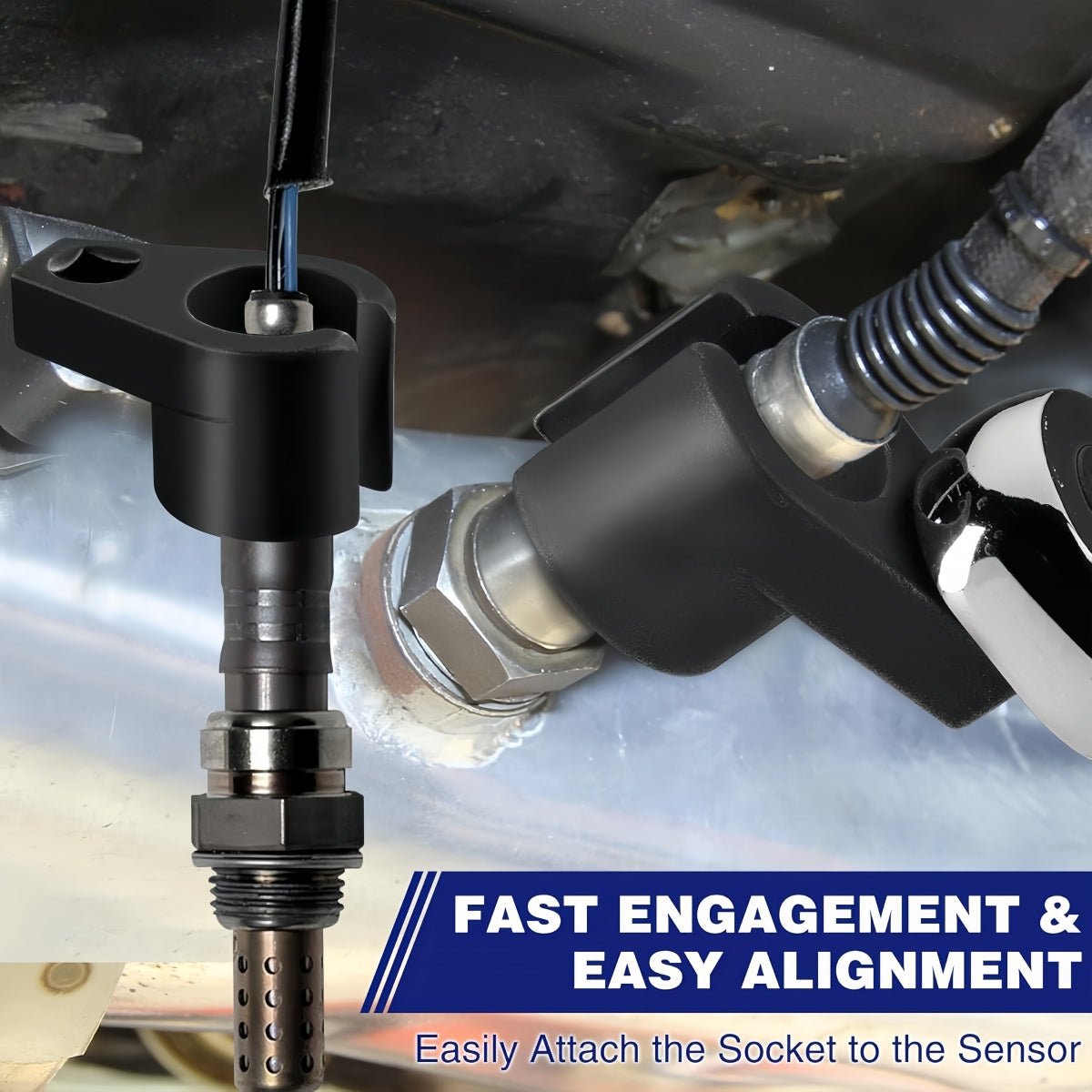The Unsung Hero of Automotive Maintenance
In the intricate world of automotive repair, certain tools stand out for their indispensable utility. Among these, the oxygen sensor removal socket plays a pivotal role in ensuring efficient and damage-free oxygen sensor replacements. Whether you’re a seasoned mechanic or a DIY enthusiast, understanding the significance of this tool can elevate your repair game.
Understanding the Oxygen Sensor’s Role in Vehicle Performance
The oxygen sensor, commonly referred to as the O₂ sensor, monitors the oxygen levels in your vehicle’s exhaust gases. This data is crucial for the engine control unit (ECU) to optimize the air-fuel mixture, ensuring optimal performance and reduced emissions. A malfunctioning sensor can lead to decreased fuel efficiency and increased emissions, making timely replacements essential.
Why a Specialized Oxygen Sensor Removal Socket is Essential
Standard tools often fall short when dealing with O₂ sensors due to their unique placement and design. Here’s why a dedicated socket is invaluable:
- Precision Fit: Designed specifically for O₂ sensors, these sockets ensure a snug fit, reducing the risk of damage.
- Wire Clearance: Many sockets come with side cutouts, allowing for easy access without harming the sensor’s wiring.
- Versatility: With various sizes and designs, these sockets cater to a wide range of vehicles and sensor types.
Key Features to Look For in an Oxygen Sensor Removal Socket
When selecting an oxygen sensor removal socket, consider the following:
- Material Quality: Opt for sockets made from durable materials like chrome vanadium steel for longevity.
- Drive Size Compatibility: Ensure the socket matches your existing ratchet or torque wrench drive sizes, commonly 3/8″ or 1/2″.
- Design: Look for sockets with side cutouts or slotted designs to accommodate sensor wiring and facilitate easy removal.
Top Oxygen Sensor Removal Sockets in 2025
Based on recent evaluations, here are some top-rated oxygen sensor removal sockets:
- Hilka Pro-Craft Oxygen Sensor Wrench: Known for its offset drive with wire gate, allowing side access and preventing wire damage. Amazon+3Screwfix+3The Motor Guy+3
- DURATECH 7PCS O2 Oxygen Sensor & Oil Pressure Socket Set: Offers a comprehensive range of sockets made from chrome molybdenum steel, suitable for various applications. B&Q+2The Motor Guy+2The Motor Guy+2
- Wevdn Oxygen Sensor Socket: Features a 3/8-Inch Drive by 7/8-Inch (22mm) design, made of high-performance chrome molybdenum steel for durability. Best Products Reviews+4The Motor Guy+4The Motor Guy+4
Step-by-Step Guide: Using an Oxygen Sensor Removal Socket
- Preparation: Ensure the vehicle is turned off and the exhaust system is cool to prevent burns.
- Locate the Sensor: Identify the faulty oxygen sensor, typically found on the exhaust manifold or pipe.
- Disconnect the Sensor: Carefully unplug the sensor’s electrical connector.UHuuD
- Position the Socket: Place the oxygen sensor removal socket over the sensor, ensuring the side cutout aligns with the sensor’s wiring.
- Remove the Sensor: Using a ratchet or breaker bar, turn the socket counterclockwise to loosen and remove the sensor. The Motor Guy
- Install the New Sensor: Thread the new sensor by hand to avoid cross-threading, then tighten using the socket to the manufacturer’s specified torque.
- Reconnect the Sensor: Plug the electrical connector back into the new sensor.
Frequently Asked Questions
Q: Can I use a regular socket to remove an oxygen sensor?
A: While possible, it’s not recommended. Regular sockets lack the design features needed to safely and efficiently remove oxygen sensors without damaging the wiring or sensor itself.
Q: How often should oxygen sensors be replaced?
A: Typically, oxygen sensors should be replaced every 60,000 to 100,000 miles, but always refer to your vehicle’s manual for specific recommendations.
Q: Are oxygen sensor removal sockets vehicle-specific?
A: Most sockets are designed to be universal, catering to a wide range of vehicles. However, always ensure compatibility with your specific vehicle model.
Conclusion: Elevate Your Repair Efficiency
Investing in a quality oxygen sensor removal socket is a wise decision for anyone involved in vehicle maintenance. It not only simplifies the replacement process but also ensures the longevity and performance of your vehicle’s engine. Equip yourself with the right tools and experience the difference in efficiency and confidence during repairs.

